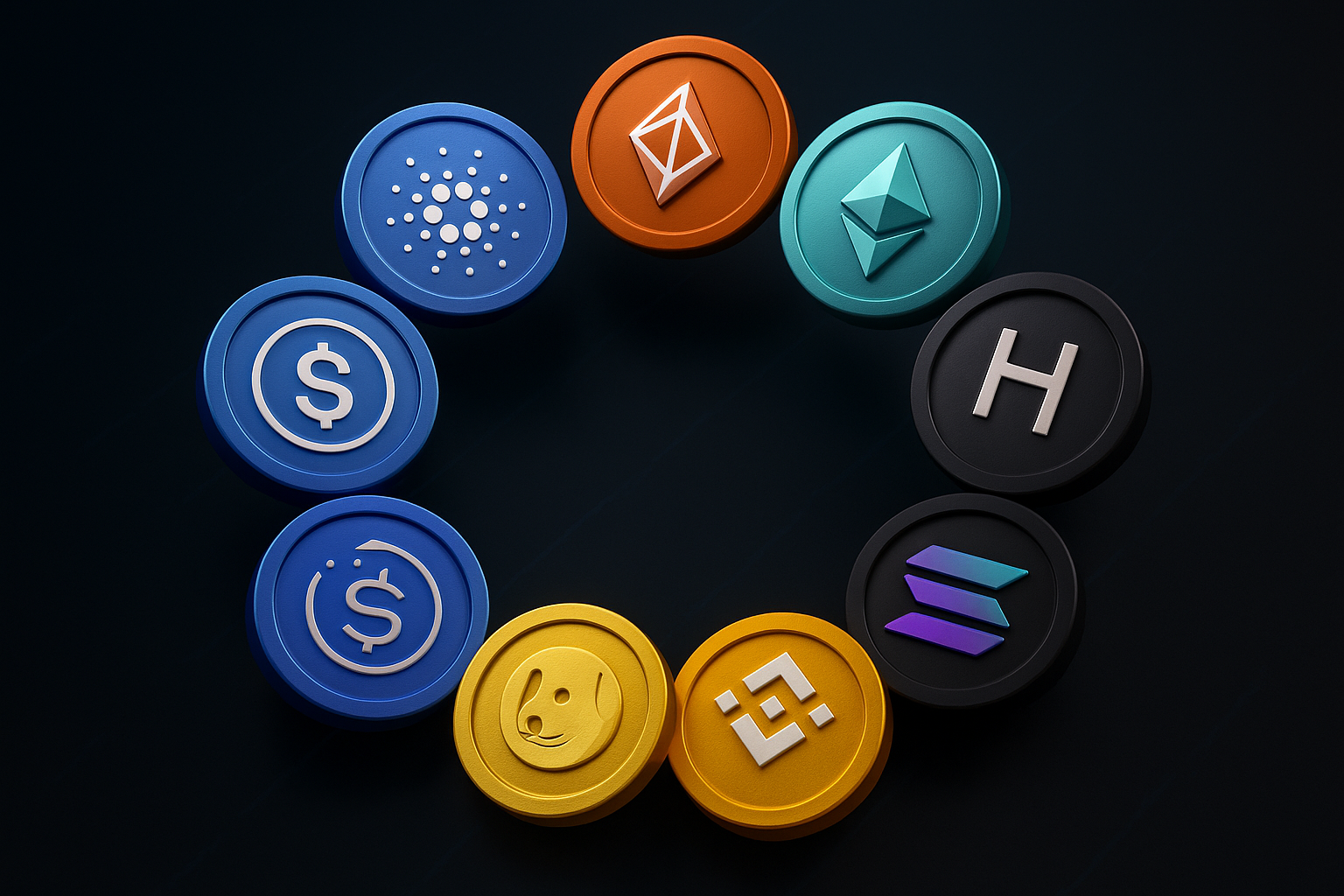Successful altcoins are built on clear direction and real-world applications. That could include cross-border payments, faster transactions or B2B-specific functionalities. But success doesn’t just come from high market capitalization; successful altcoins are measured by network adoption and the tangible value they deliver. True altcoin success hinges on metrics like transaction throughput, developer activity, robust security, and strategic partnerships that drive real‑world use. It’s about getting creative and solving real-world challenges, using technology that leverages the benefits of decentralized blockchain technology.
In this article, we explore some of the top altcoin success stories, their goals, their technological foundations, ecosystems, and the partnerships that have sent them flying to the highest echelons of blockchain innovation.
Cardano (ADA): Sustainable blockchain innovation
Topping the list of today’s most successful altcoins is Cardano. Cardano made its debut into the crypto market in September 2017, spearheaded by mathematician and entrepreneur Charles Hoskinson, co-founder of Ethereum. After leaving the Ethereum Foundation in 2014, Hoskinson co-founded Input Output Global alongside Jeremy Wood, which has driven the development of Cardano.
He frequently emphasizes blockchain’s potential for social impact, spearheading real-world applications and partnerships with governments and enterprises, such as the Ethiopian Ministry of Education’s blockchain‑based student ID initiative, to showcase real‑world utility. At the heart of Cardano’s ecosystem is its native token, ADA, which underpins transaction fees on the network, secures the protocol through delegated staking, and enables participation in on‑chain governance.
Stellar (XLM): Purpose-built payments facilitating financial inclusion
At number two, Stellar. Stellar launched in July 2014 under the leadership of Jed McCaleb (co‑founder of Ripple and Mt. Gox) and former lawyer Joyce Kim, who together established the nonprofit Stellar Development Foundation. Their goal was to build an open, global payment rail capable of processing cross‑border transactions faster and cheaper than legacy systems.
At the heart of Stellar’s ecosystem is its native token, Lumens (XLM), which powers every operation as both a bridge asset and spam‑prevention mechanism. In terms of real-world applications, IBM’s World Wire payment rail uses XLM as a bridge currency to settle transfers across 47 currencies in 72 countries, while Circle’s USDC integration and Tempo’s remittance services leverage Stellar to deliver fast, low‑cost transactions in underbanked regions.
Tron (TRX): Scalable dApp and content ecosystem
Next up, Tron. Founded in September 2017 by Justin Sun under the Tron Foundation, Tron set out to “decentralize the web” by creating a free, global entertainment and content‑sharing ecosystem. Initially deployed as an ERC‑20 token on Ethereum, TRX migrated to its own Mainnet in June 2018, introducing a bespoke blockchain designed for high‑throughput dApps. Today, supported by a three‑layer architecture, the Tron Virtual Machine enables up to 2,000 transactions per second.
Central to the Tron ecosystem is its native token, TRX, which powers transaction fees, smart-contract calls, and grants on‑chain governance via “Tron Power”. Some of Tron’s strategic partnerships include the 2018 acquisition of BitTorrent, integrating over 100 million users and launching the BTT token for peer‑to‑peer incentives, as well as integrations with Samsung’s Blockchain Keystore and Opera’s crypto wallet to embed TRX support across hundreds of millions of devices.
Avalanche (AVAX): “Melt the barriers”
At number four, Avalanche. Avalanche burst onto the scene in September 2020 with its mainnet launch, spearheaded by Emin Gün Sirer, Kevin Sekniqi, and Maofan “Ted” Yin of Ava Labs to shatter the blockchain trilemma with its Avalanche Consensus protocol. Its multi‑chain architecture has transformed Avalanche into a fully customizable hub for DeFi, NFTs, and enterprise-grade applications.
Its native AVAX token powers transaction fees, secures the network through staking, and fuels on‑chain governance, while the Avalanche Rush incentive program and the launch of Evergreen Subnets in April 2023 have turbocharged ecosystem growth. Their commendable real-world applications include a Deloitte alliance on disaster‑relief finance, and AWS tooling that spins up Subnets in minutes, demonstrating Avalanche’s drive to melt barriers and advance key blockchain innovations.
Kaspa (KAS):
Last but certainly not least, we have Kaspa (KAS). Kaspa was introduced onto the scene following a truly fair launch in November 2021 (no ICO, no pre‑mine) led by Dr. Yonatan Sompolinsky and his DAGLabs team. The project’s proof‑of‑work protocol transforms the blockchain into a parallelized blockDAG, allowing every one‑second block to coexist and be ordered securely without orphans.
This architecture not only achieves sub‑second transaction confirmations and plans to scale up to 100 blocks per second but also keeps entry barriers low thanks to an energy‑efficient kHeavyHash algorithm. Developers were quick to respond, and Kaspa now offers smart‑contract support via the Casplex Layer 2, with the PPKAS gaming platform on the horizon.
For more insights and reflections on crypto trends, trading, how to use Limitlex, or to open a trading account with us, visit www.limitlex.com.



